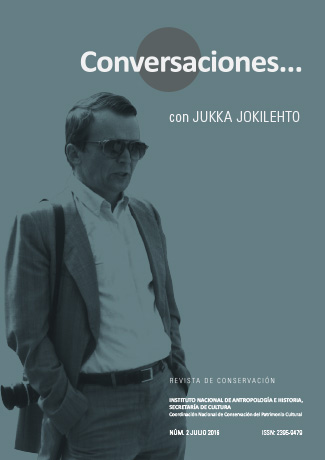Publicado 2017-05-26
Cómo citar
Resumen
This paper explores first the definition of values and related notions, such as relativity, absolute, universal, and the relationship of heritage values with human rights. This is followed by a survey on the evolution of heritage values from the Antiquity to the Present, taking into account some of the principal landmarks on the way, including reference to thinkers such as John Ruskin, Alois Riegl and Cesare Brandi. Reference is made to the international doctrine, and particularly to the definition of the Outstanding Universal Value within the World Heritage context. The question is raised whether it is possible to measure heritage value. The answer is that it is more appropriate to speak of measuring the impact of such values. It is noted, for example, that heritage value cannot be comparable to market value, even though these sometimes coincide. The relevant parameters in each case are different. One way of measuring the impact is to work with the groups of stakeholders aiming at communicating and learning shared values in a heritage community. This is also the basis for the so-called Public Value, which can justify initiatives by policy makers and administrations. The paper concludes that values are generated through continuous learning processes and the definitions change over time resulting in diversity. Measuring values is more appropriately expressed in terms of monitoring their impact.
Descargas
Referencias
- Jukka Jokilehto (2010) “Heritage, values and valuation”, In: M.
- Quagliuolo (ed.), Measuring the value of material cultural heritage. “Quality in cultural heritage management - Results of the HERITY international conferences - Dossier number 2 (2008), DRI-Fondazione Enotria ONLUS, Rome.
- Brandi, Cesare (1963) Teoria del restauro, Edizioni di Storia e Letteratura, Roma.
- Brandi, Cesare (2005) Theory of restoration, Nardini editore, Florence.
- Clark, Kate (ed.) (2006) Capturing the public value of heritage. The proceedings of the London conference, 25-26 January 2006, Heritage Lottery Fund, English Heritage, London.
- Council of Europe (2005) Framework Convention on the value of cultural heritage for society, Council of Europe Treaty Series - No. 199.
- ICOMOS (1994) Nara document on authenticity, ICOMOS, Paris.
- ICOMOS (2005) The World Heritage List: Filling the gaps - an action plan for the future, Jukka Jokilehto (comp.), ICOMOS, Monuments and Sites XII, Munich.
- Jokilehto, Jukka (1999) A history of architectural conservation, Butterworth-Heinemann, Oxford.
- Larsen, Knut E. (ed.) (1995) Nara conference on authenticity, Proceedings, UNESCO World Heritage Centre, Agency for Cultural Affairs of Japan, ICOMOS, ICCROM, Tapir Publishers, Trondheim.
- Oxford English Dictionary (2010) Oxford University Press, Oxford.
- Riegl, Alois (2014) [1903] Der moderne Denkmalkultus, sein Wesen, seine Entstehung, Literary Licensing LLC, Vienna.
- Ruskin, John (1849) The seven lamps of architecture, John Wiley, London.
- UNESCO (1972) Convention concerning the protection of the world cultural and natural heritage, UNESCO, Paris.
- UNESCO (1998) Linking nature and culture - Report of the global strategy, Natural and cultural heritage expert meeting, Bernd von Droste, Mechtild Rossler and Sarah Titchen (eds.), Netherlands Ministry for Education, Culture and Science, Directory for Cultural Heritage, Amsterdam.
- United Nations (1948) Universal declaration of human rights, United Nations, New York, 10 December 1948.
- United Nations (2000) Millennium declaration of the United Nations, United Nations, New York, 8 September 2000.

